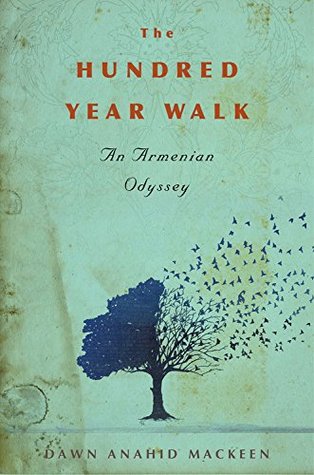On January 12 at the Tenement Museum, I introduced a book launch event for my friend Dawn Anahid MacKeen. Below are my brief words of introduction.
“The fox knows many things, but the hedgehog knows one big thing.” This fragment of verse by the Greek poet Archilochus was famously explored by Isaiah Berlin in his celebrated essay “The Hedgehog and the Fox: An Essay About Tolstoy’s View of History.” Berlin divided thinkers into two categories—the hedgehogs and the foxes—and attempted to argue that Tolstoy was a hedgehog with foxlike tendencies. Berlin later said, “I never meant it very seriously. I meant it as a kind of an enjoyable intellectual game, but it was taken seriously.” And so without taking too seriously either the Archilochus fragment or the Berlin essay, I would like to suggest to you that Dawn and I are hedgehogs. (I have a hunch that Raffi has hedgehog-like tendencies as well, but I don’t know his work broadly enough to make that claim.) When I say that Dawn and I are literary hedgehogs, this is because each of us spent ten years researching and writing our recent books. While the foxes of the writing world were happily producing books at regular, frequent intervals, we were digging into our respective very deep holes, burrowing so deeply, in fact, that at times we even doubted that we’d be able to find our way to the surface again.
In Dawn’s case, these efforts have resulted in the book we are here to celebrate tonight. The Hundred-Year Walk is a meticulously researched, beautifully written, and thoughtful work in which Dawn has woven together memoir, travel chronicle, family lore, and political history. It is a deeply personal story, but as the subtitle indicates—An Armenian Odyssey—it is also part of a community and a communal project.
One hundred years ago, Armenians in the Ottoman Empire were the victims of a horrific crime—the mass annihilation of hundreds of thousands of people, and the near complete erasure of Armenians from the lands where they had lived for many centuries, if not from the beginning of recorded history. In the face of these devastating losses, most of those who survived were dispersed around the world where they fashioned new families and communities. These communities were bound together by religious institutions, by language, and by shared history. They were also knit together, I would argue, by the stories that they told—stories about the towns and villages that were lost, about the people who died and those who survived, and about their lives in these new lands. These stories were passed from parent to child, and more frequently from grandparent to grandchild.
But these narratives are also produced by the modern-day equivalent of the Armenian ashough or troubadours. In memoirs, novels, histories and poems, post-genocide Armenian writers—many in the Diaspora, and often using the languages of their adopted countries—have created new geographies of connection and belonging—geographies that are not simply stories of return, but stories with motion of their own, that take us to places both grounded in history and unmoored in imagination.
What Dawn has given us in The Hundred-Year Walk is a multi-generational story of resilience and survival. She and Raffi are going to talk to us now about the process of writing the book, as well as about the ways the past, the present, and the future inform and create each other. And after we hear more about Dawn’s and her grandfather’s journeys, I exhort you to buy at least two copies of her book—one for home and one for the road.
Nancy Kricorian
New York City
January 13, 2016
